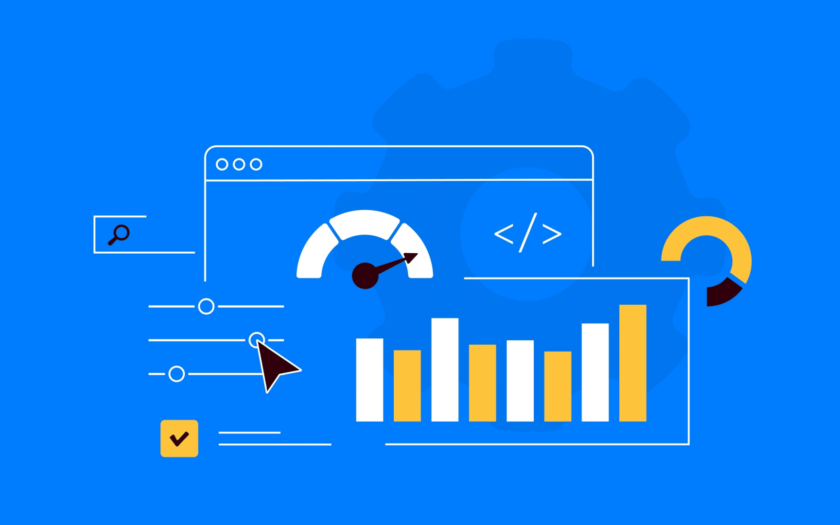A few of the top caching solutions for WordPress sites are:
WP Rocket.
WP Super Cache.
W3 Total Cache.
If your site hits a database often, this may be a bottleneck for your site, so something like Memcached may be needed.
4. Optimize videos and images
A major part of LCP is images and videos.
Compressing all image and video files is best. In most cases, GIFs should be replaced by videos.
If your images or videos are large, consider a content delivery network or third-party hosting. You’ll find plenty of useful guides to help you master video and image optimization:
5. Use lazy loading
One way to improve the loading of an image-heavy site is to have asynchronous loading, also called lazy loading, to help speed up your site’s first render. Lazy loading is a bit tricky, but many caching plugins also offer this functionality.
Google Search Central has a guide on how to fix lazy-loaded content to avoid any issues.
If developing for Chrome, you can use the loading=”lazy” attribute for images, but you want to ensure they come after the viewport.
6. Use a content delivery network
It’s recommended to place images, videos, CSS, JavaScript or any static files on a content delivery network (CDN).
A CDN is an ultra-optimized network with servers worldwide that hosts your files, improves delivery speed and reduces the load on your site’s server.
Where do you begin?
First, select a CDN, and most will have implementation guides for the CMS that you’re using. Some of the many CDNs available include:
Cloudflare.
Amazon CloudFront.
Akamai.
Bunny.
Sucuri.
7. Reduce redirects
Your site may have redirects, which are 100% natural in a site’s evolution.
However, you should remove any redirect chains where one page redirects to another that redirects because they will impact your site’s speed.
As an SEO expert, I recommend you first get up to speed on how redirects work and why they’re so valuable. You can follow this guide to get started: An SEO’s guide to redirects.
8. Audit your plugins
If you’re running a popular CMS, it’s not uncommon to have dozens of plugins installed.
You should review all these plugins and replace those that are unused or can be replaced under one plugin.
Start going through each plugin one by one and asking:
Do I use this plugin?
Are these plugin features already available in another plugin I use?
Reducing the bloat from your plugins will greatly improve page speed.
9. Upgrade your hosting
Finally, if you’ve done everything else and page speed won’t improve, you may want to upgrade hosting.
Some hosts have slow older systems, but most will allow you to add more RAM and CPUs to help improve site speed if traffic is causing the server to hang.
If you’re running an Apache or Nginx server, you can install the PageSpeed Module on your server. The benefit of this module is that it works on the server level to improve speed, meaning your site’s application will not be altered.
Note: To improve site speed, you may need to work with IT or server administrators to implement some of the changes above.
Get the newsletter search marketers rely on.
Tips to improve page speed further
On top of just focusing on speed, you want to improve page experience using the tips below.
Mobile-friendliness
Today, every site needs to be mobile-friendly. Using a responsive design is essential for improving user experience and ensuring accessibility across all devices.
Next, if you follow the speed tips above, you’ll improve mobile site speeds, too.
Finally, consider:
Eliminating or reducing pop-ups.
Creating mobile-friendly content with a focus on readability.
Safe browsing
Safe and secure browsing are two elements of a site that you should already be offering. You’ll want to:
Run a secure site using HTTPS.
Run security checks on your site.
Scan all uploads to the site for malicious coding, malware, viruses and more.
Routine monitoring is also essential. If your site is compromised, Google will quickly flag it and cause many would-be visitors to abandon it.
Non-intrusive interstitials
Interruptions are never good for user experience, but they may be necessary to generate revenue or add subscribers to your newsletter. However, you’ll want to do your best to reduce pop-ups and interstitials.
Mobile devices have limited screen space, and if your site has many pop-ups and interstitials, it can make it difficult or impossible to interact with the site, creating a poor page experience.
Review ad networks
If your site displays ads, it’s important to consider their impact on page experience.
Ad networks require you to add code to serve ads, but if the network is slow to load, it can significantly reduce your page speed.
You should review:
Ad networks to see the impact they have on your site’s speed.
All plugins or third-party elements on your site that are out of your control.
If an ad network, script or service impacts site speed, it will hurt your page experience.
Bottom line
While page speed’s impact on SEO shouldn’t be the only thing to focus on, it’s an integral part of optimization that is mostly in your control.
Using Core Web Vitals as a guide, your site speed and page experience should improve, potentially boosting rankings.
Contributing authors are invited to create content for Search Engine Land and are chosen for their expertise and contribution to the search community. Our contributors work under the oversight of the editorial staff and contributions are checked for quality and relevance to our readers. The opinions they express are their own.
